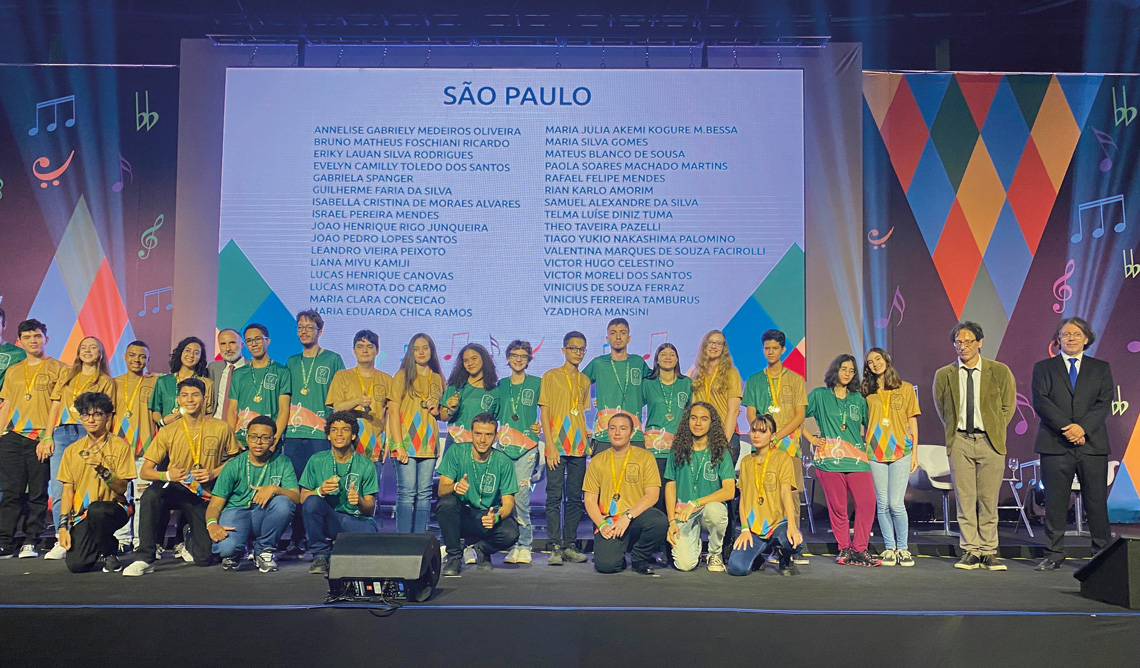Brazilian students competing in science, technology, engineering, and mathematics (STEM) olympiads now have an added incentive: their medals can now serve as an entryway to public universities in replacement of conventional entrance examinations or the National High School Examination (ENEM). Since 2019, when the inaugural group of medalists was admitted to undergraduate programs at the University of Campinas (UNICAMP) — Brazil’s first university to introduce this mode of entry — “Olympic spots,” as they are termed in Brazil, have seen increased adoption. At least five other public universities now set aside places for medal winners: the University of São Paulo (USP), São Paulo State University (UNESP), and the Federal Universities of Itajubá (UNIFEI), ABC (UFABC), and Mato Grosso do Sul (UFMS).
As a result, many aspiring students are pursuing STEM medals as an alternative route into higher education. This is the case of 18-year-old Yasmin Bonet, who in early 2023 gained admission to the computer science program at UNESP’s Presidente Prudente campus after earning a bronze medal in the Brazilian Robotics Olympiad (OBR). “I dedicated my last year in secondary education to a scientific initiation and technical course,” she says. “After a teacher of mine told me about Olympic slots, I researched the programs available and the universities offering this route. So I decided to devote my time to STEM competitions,” she says, noting that she had already been participating in these competitions since elementary school. She also attempted the regular entrance exam for computer science but was not accepted.
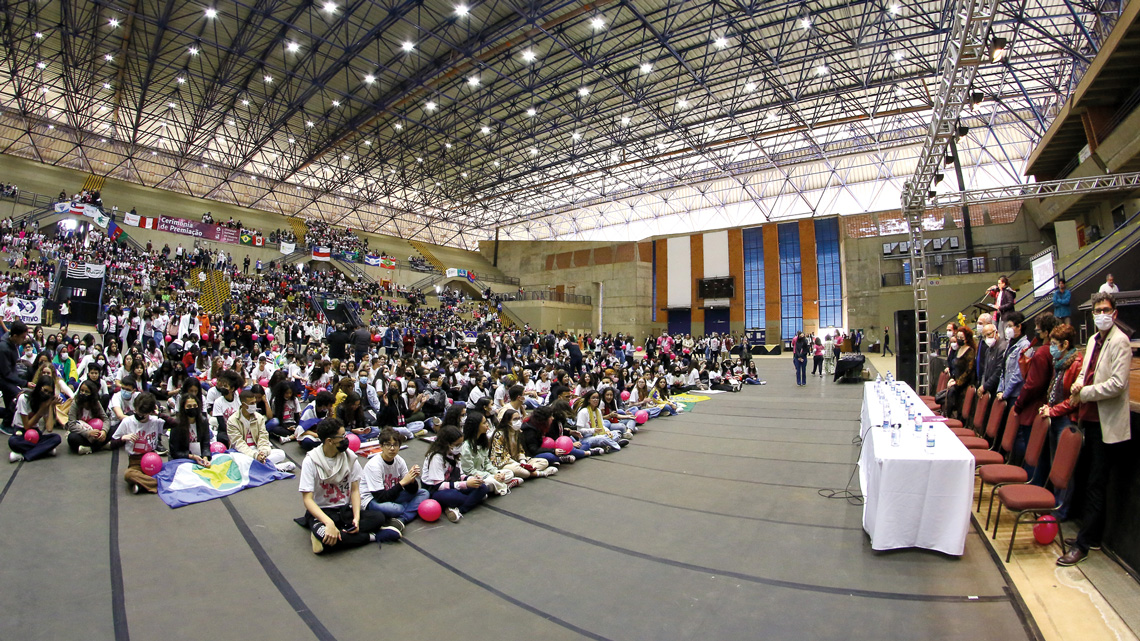
Pedro AmatuzziStudents in the History of Brazil OlympiadPedro Amatuzzi
Nathan Leonardo, a 19-year-old student from Espírito Santo, used a similar strategy to gain admission to a control and automation engineering program at UNICAMP in 2023. With over 10 medals to boast in astronomy, mathematics, and robotics competitions, he used his silver medal from the Brazilian Public School Mathematics Olympiad (OBMEP) as his ticket to a place reserved for medal winners. Unlike with the conventional entrance-exam admission process, he was not required to travel from his hometown, Serra, as he could complete everything online, which made the application process easier. “I was keen to gain admission to college without resorting to prep courses, and Olympic admissions seemed like the perfect opportunity. I spent 2022 preparing for the OBMEP competition, which held more weight for the program I wanted to pursue,” he explains.
In search of latent talent
Universities are increasingly implementing Olympic admissions as a way to enhance diversity within their student bodies, but are still exploring avenues to better structure this admission model. “Olympic spots are a way to attract talents who excel in specific fields but may not be successful in a conventional entrance examination system,” explains historian José Alves Freitas, director of UNICAMP’s Permanent Admissions Committee. Despite the increasing interest, he underscores that the number of applicants still falls short of available spots — which are categorized as either regular or extra. Out of the 564 vacancies offered across the five editions of the program at UNICAMP, only 267 medalists applied. When these spots remain unfilled, the regular ones are returned to the conventional entrance exam admission pool, while the “extra” spots, created specifically for this program, go unused. Freitas believes there are additional factors behind the limited number of enrollees. “Many students target specific academic programs. At UNICAMP, computer science is the top choice among olympiad participants,” he notes. For the 2023 intake, UNICAMP offered five spots for this program — the number of available openings varies depending on the course and institution.
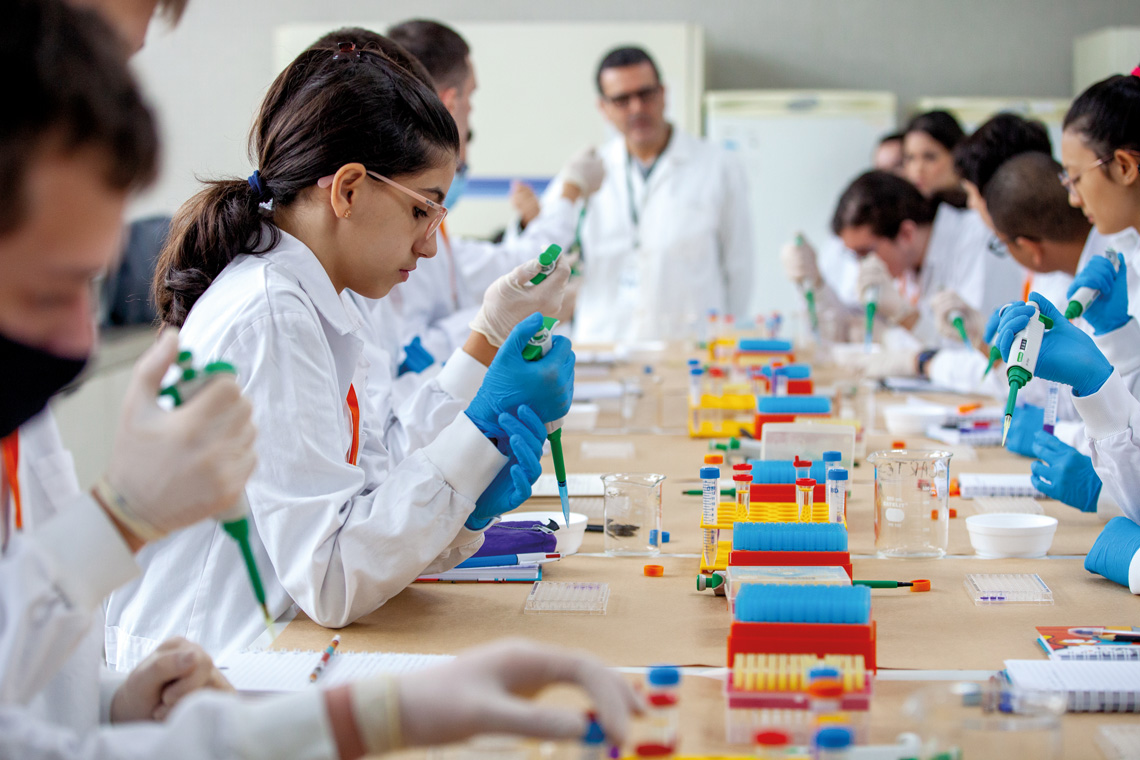
Butantan CommunicationsStudents in the Biology Olympiads: attracting talentButantan Communications
UNESP and USP, where Olympic admissions are offered in addition to regular slots, have had a similar experience. At UNESP, 863 openings have been available since 2020, but only 137 students have applied in aggregate. At USP, out of the 113 slots offered in 2019 for enrollment in 2020, only 30 students enrolled. “We are still looking for answers, but one possibility is that there are not always Olympic spots available for the programs medalists want to enroll in. In addition, they may apply via the Olympic route but also hedge their chances by trying other pathways, such as the conventional entrance examination,” says Marcos Garcia Neira, associate dean for undergraduate affairs at USP. The university paused its program during the pandemic but intends to resume it for the 2024 intake.
According to Neira, USP plans to expand the range of eligible courses and competitions beyond the exact and life sciences, increasing the number of spots to 200. Competitions such as the Brazilian Linguistics Olympiad (OBL) and the National History of Brazil Olympiad (ONHB), for example, are expected to be incorporated next year — the latter is already accepted at UNICAMP, UNESP, and UFMS. UNESP also intends to expand its offerings. “We will discuss the possibility of raising the limit of 10% extra spots that can be offered,” says Celia Giacheti, the university’s associate dean of undergraduate programs.
According to physicist Antônio Carlos Hernandes, former associate dean for undergraduate affairs at USP, this would be a welcome development. “The more higher-education opportunities are extended to high school students who excel in STEM competitions, the better for the academic environment at our universities. Greater diversity enhances academic development for students,” he wrote in an email. Freitas, from UNICAMP, notes that many students currently use their medals to seek admission to universities outside Brazil, such as in the US, where they are highly valued. “Offering a spot is in itself not enough to attract these students. Providing grants, including those available from funding agencies, could be a way to lure them in,” says Freitas. Juana Nunes, who heads the Department of Science, Technology, and Scientific Education Outreach at the Brazilian Ministry of Science, Technology, and Innovation (MCTI), shares this view. “STEM medal winners should have Brazilian public universities as their destination of choice. To make that happen, they need more incentives, such as scholarships and grants,” she concurs.
According to the Open Doors 2022 Report on International Educational Exchange, published by the US-based Institute of International Education, 14,897 Brazilian undergraduate students were enrolled in American higher education institutions in 2021 and 2022, with Brazil ranking eighth among countries with the most students in the US. “Olympic admissions are a bid by Brazilian universities to deter high-achieving students from leaving the country. Universities are attempting to preempt this brain drain by accepting both national and international medals,” says physicist João Canalle from Rio de Janeiro State University (UERJ), who also oversees the Brazilian Astronomy and Aeronautics Olympiad (OBA), one of the largest competitions of its kind in the country, boasting 1.38 million participants in 2023.
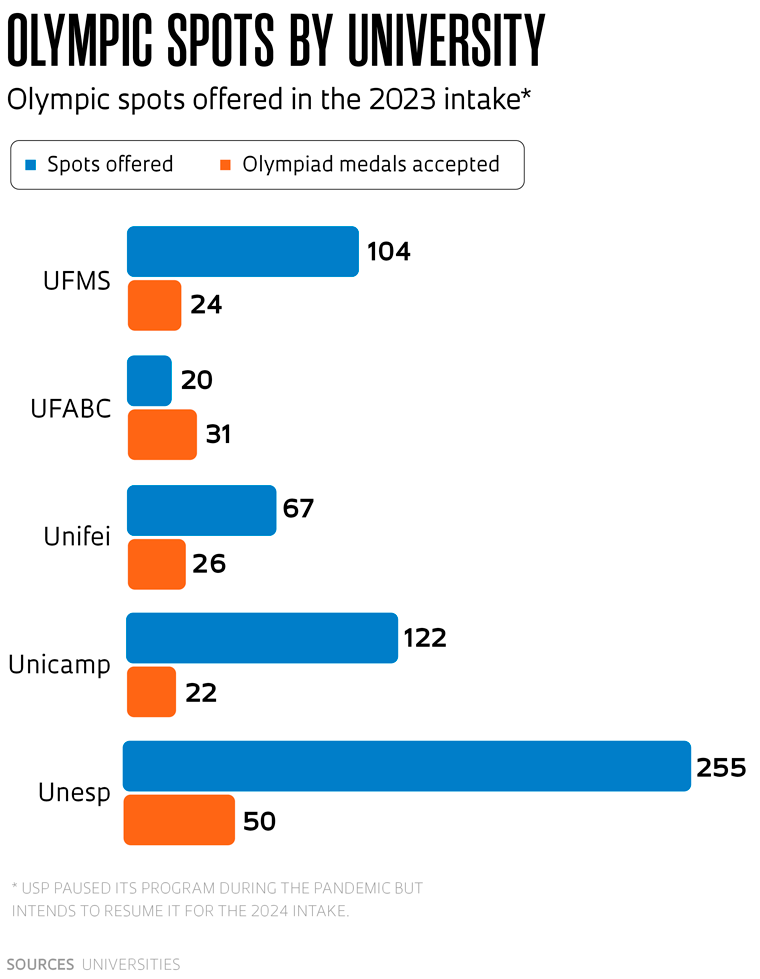
A recent OBA gold medalist, Katarine Emanuela Klitzke from Timbó, Santa Catarina, was among those who chose to study abroad. Back in 2018, during her final year of high school, she faced the choice of whether to devote her time to studying for entrance exams or preparing for the final round of the Latin American Olympiad of Astronomy and Astrophysics (OLAA) in Paraguay. “I chose the Olympiad because I knew that a medal would carry significant weight with international universities,” she recalls. She indeed clinched the gold medal, and secured a spot in the first Olympic admissions intake at UNICAMP. However, as she had also received acceptance offers from three American universities, she ultimately selected the Georgia Institute of Technology in Atlanta. “As the UNICAMP program was still incipient, and nobody knew for sure how it would work, I decided my best option would be to study abroad. The cutting-edge laboratories were another factor in my decision,” she recalls. At the close of 2022, she graduated with a degree in computer engineering, with a specialization in astrophysics and artificial intelligence. Today, she works as a hardware engineer at Microsoft in the US.
Natainá Novaes, another gold medalist who recently graduated as a statistician from UNICAMP at the age of 22, was part of the inaugural Olympic class admitted to the university a little over four years ago. Her advice to students looking to apply for these programs is to read universities’ admission rules carefully. In lieu of entrance exams, each university devises a scoring system based on the type of program, the competition in question, and what medal the student has won. Applicants need to register and submit their certificates and other requisite documents, with a committee subsequently evaluating their applications. Some competitions are higher scored than others depending on the chosen program.
“Each medal carries a different weight, with some institutions placing higher value on international olympiads. Academic records hold substantial weight as tiebreakers as well,” she adds. Novaes began participating in scientific competitions as a 9th grade elementary school student. She attended high school with a concentration in computer science at the Federal Institute of Education, Science, and Technology (IFSP), São João da Boa Vista campus, where she garnered three more medals. In 2018, as she prepared for college, she discovered UNICAMP’s Olympic spots. “I decided to concentrate on preparing for the OBMEP competition. My goal was to win the gold to earn the opportunity to study what I love at university, which made the process more enjoyable,” she recalls. Today, she works as a junior engineer at Serasa in São Carlos and is planning to pursue graduate studies in computer science or artificial intelligence.
The expiration date of a medal varies depending on the institution: some accept awards from up to two years prior, while others may consider achievements further back. Jonas Menino, an 18-year-old student from Barra Bonita, São Paulo, earned admission to the medical physics program at the Botucatu campus of UNESP in 2023 with an OBA gold medal he won while still in middle school in 2019. This was his last accolade before being diagnosed with anxiety and depression. “I always enjoyed studying, had a strong academic record, and had previously won gold and bronze in mathematics competitions. In 2020, right at the beginning of high school, the pandemic hit and everything changed,” he recalls. “Classes transitioned to remote learning, and like many of my classmates, I struggled to stay focused and perform well in many subjects. I decided to seek psychological therapy.”
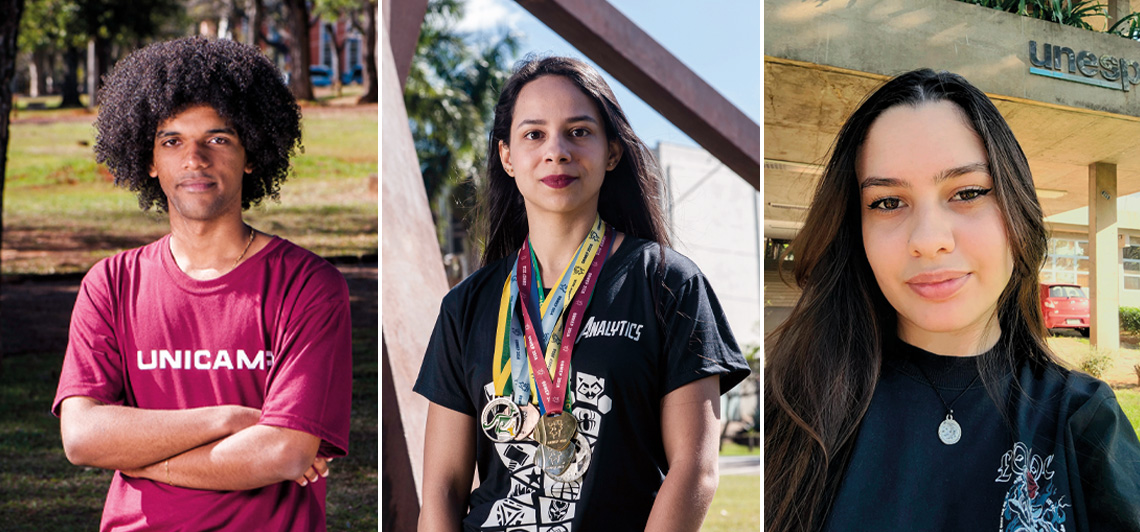
Léo Ramos Chaves / Revista Pesquisa FAPESP | Personal archive Medal winners Novaes, Leonardo (left), and Bonet (right) gained admission to UNICAMP and UNESP without having to pass a conventional entrance examinationLéo Ramos Chaves / Revista Pesquisa FAPESP | Personal archive
In the interim, Jonas participated in remote editions of STEM competitions but failed to secure any awards. He also took entrance exams for several universities but was unsuccessful. “Then an aunt told me about UNESP’s Olympic spots. I discovered that my medal from back in middle school could still be used, so I applied for the medical physics program. It was a game changer: ever since entering university, a dream of mine, I’ve been doing well and have regained my focus.”
According to Sonia Chudzinski, a researcher at the Butantan Institute who also heads the Brazilian Biology Olympiad (OBB), the increasing adoption of Olympic spots by universities is an important step. “Students are rewarded for outstanding performance in a field they are truly passionate about. Even geniuses are not good at everything,” she says. The 2023 edition of the OBB Olympiad had 150,000 participants, 50% more than in the previous year, highlights Chudzinski, attributing part of this growth to a postpandemic uptick and the availability of Olympic spots. “We noticed there’s a new audience interested in entering undergraduate programs through these championships.” OBB medals are accepted for admission at UNICAMP, UNESP, USP, UNIFEI, and UFMS.
Mathematician Claudio Landim, who supervises the OBMEP competition and serves as deputy director at the Institute for Pure and Applied Mathematics (IMPA) in Rio de Janeiro, takes a favorable view to medal-based admissions. “A university should not select students solely based on what they are at the moment, meaning what they can demonstrate in an exam, but based on what they have the potential to become.” Olympiads serve the purpose of identifying students who can shine if given the right opportunity. “The problems students are asked to solve in the OBMEP competition do not require advanced mathematics skills but do require students to be skilled at reasoning, resourceful, and creative. So we can still identify those who have a latent talent for mathematics.” Established in 2005, this year’s OBMEP had 18 million participants in its first phase and ranks as the largest olympiad in Brazil. It was designed as a joint policy initiative of the MCTI and the Ministry of Education (MEC) through IMPA, and has a guaranteed annual budget allocation — the latest edition cost approximately R$40 million. In 2024, OBMEP winners will have yet another program accepting their medals for admission. IMPA is currently developing a new undergraduate program in applied mathematics for technology and innovation. Some of the 100 available slots will be offered to top performers in the OBMEP Olympiad.
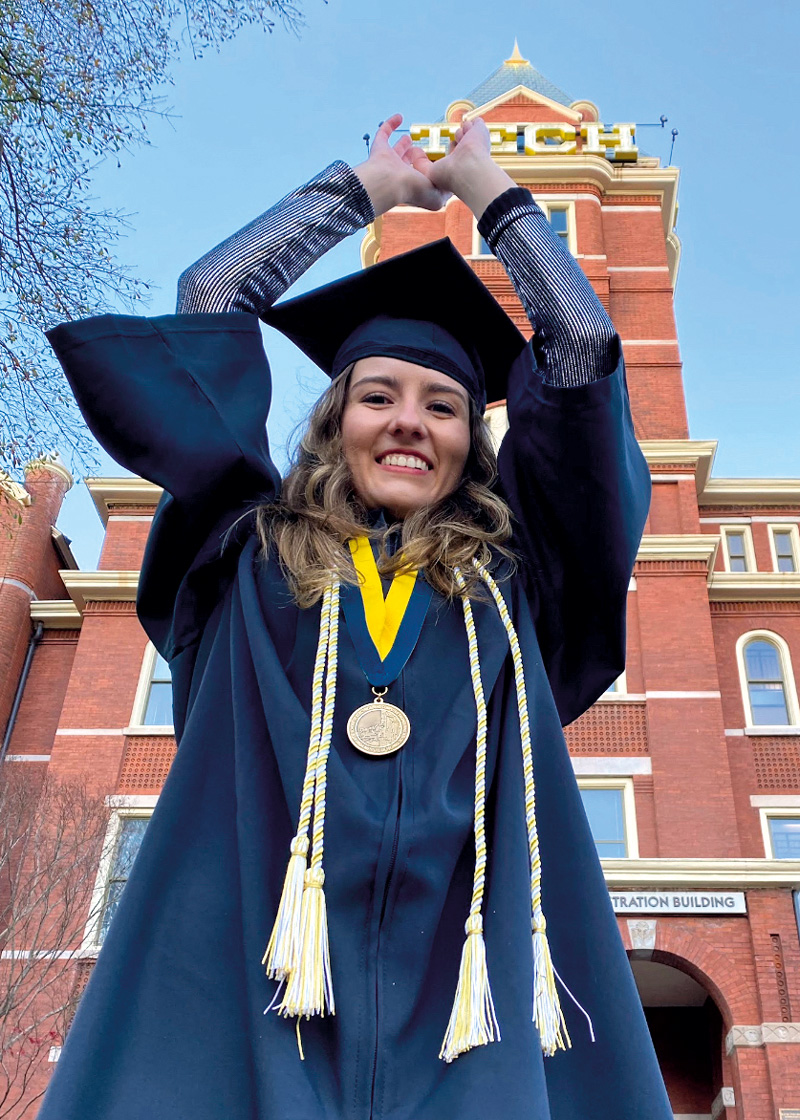
Personal archiveKatarine Klitzke was awarded an Olympic spot at UNICAMP but ended up going to the Georgia Institute of Technology in the US, where she earned her degree in computer engineeringPersonal archive
Physicist Euclydes Marega Júnior, from the Institute of Physics at the University of São Paulo (IFSC-USP), notes that STEM competitions have gained increasing importance in school calendars over the past two decades. “A growing number of students are engaging in extracurricular activities to prepare for STEM olympiads,” he wrote in an email. In 1995, he founded a physics competition for high school students that later evolved into the Brazilian Physics Olympiad in 1999. For many years, he coached teams of students for international competitions.
According to the MCTI, Brazil currently hosts 104 knowledge competitions spanning a wide range of fields, including social sciences, life sciences, and humanities. “A few years ago we had about 20 olympiads. Today, we see a profusion of them, but many are gone within a few years of being launched. We lack longer-term education planning,” says Cristina Meneguello from UNICAMP, who manages the ONHB competition. In its 15th edition this year, ONHB had 30,524 registered teams — each consisting of up to three students and one teacher. “Olympic spots further accentuate the role of olympiads in science outreach, but they also create a heightened sense of responsibility,” says Meneguello, who is part of a working group established by MCTI in early June to evaluate and discuss STEM olympiads and other science outreach activities.
“Some of the questions we are asking in this working group are: Do we really need more than a hundred olympiads? Or do we need to improve them by identifying overlapping initiatives while promoting new ones in different fields?” says Juana Nunes from MCTI. Her group of 15 subject-matter experts, she adds, is working to develop a proposed national program for science outreach. “We’re discussing ways for Olympic admissions programs to move beyond isolated initiatives and perhaps be expanded to all federal universities.”
Bruno L’Astorina, coordinator of the Brazilian Linguistics Olympiad (OBL), sees the proliferation of competitions as a natural consequence of the growing interest from educators and researchers in these initiatives. “It’s only natural that new competitions are created across a wide array of fields,” he says. However, this poses a challenge for schools to prepare students for multiple competitions. “There are only so many olympiads a student can successfully participate in,” he notes. L’Astorina is in ongoing discussions with coordinators of other olympiads on the possibility of merging them together. “It’s a challenge, and we need to find ways to do it without each competition losing its identity,” he adds. The OBL competition attracted around 10,000 participants in its 2022 edition.
Organizers recognize that while the number of scientific olympiads has grown, the funding to support them has not kept pace
According to STEM competition coordinators interviewed for this article, multiple sources of funding are pooled together to finance their olympiads, with the exception of OBMEP, which has a guaranteed allocation of funding. These funding sources include grants from affiliated institutes and universities, as well as private partnerships. A significant portion of funding comes from public calls for project proposals issued annually by the Brazilian National Council for Scientific and Technological Development (CNPq), with funding provided by the Ministry of Science, Technology, and Innovation (MCTI), a practice that has been in place since 2002.
In a paper published in the journal Caderno Brasileiro de Ensino de Física in April 2022, researchers from the Federal University of Rio de Janeiro (UFRJ) and the Oswaldo Cruz Foundation (FIOCRUZ) analyzed calls for proposals issued from 2005 to 2015. They identified 11 calls in which 229 proposals were submitted. Out of these, 96 projects were approved to organize 21 olympiads, largely in the fields of exact and Earth sciences. These competitions received total funding of R$25 million, averaging about R$2.2 million per year, but with the amount in a given year ranging widely from R$800,000 to R$4 million. These fluctuations were influenced by the sources of funding, which alternated and sometimes overlapped: MCTI, CNPq, MEC — via the National Education Development Fund (FNDE) — and the Brazilian Federal Agency for Support and Evaluation of Graduate Education (CAPES). “These olympiads have grown in importance while their budget has remained virtually unchanged for a decade,” says physicist Willian Vieira de Abreu from UFRJ, the lead author of the study.
In 2021, the CNPq call offered R$4 million. In its latest edition, in 2022, it offered R$8.8 million, with 31 competitions being awarded funding. This increase was due to an injection of approximately R$5.8 million from the National Fund for Scientific and Technological Development (FNDCT), according to Ana Cláudia Mota, who manages calls for STEM olympiads at CNPq. “For the first time, we issued calls across three different categories: in addition to international and national olympiads, there was a third category for regional competitions,” explains Mota. Competitions aiming to enhance participant diversity were also awarded funding, such as the 2nd National Olympiad of Traditional, Quilombola, and Indigenous Peoples, organized by the State University of Mato Grosso (UNEMAT). According to Juana Nunes, director of science education and outreach at MCTI, a budget of R$13 million will be allocated for the 2023 call for olympiads, with R$8 million coming from the MCTI budget and R$5 million from the CNPq budget.
Scientific article
ABREU, W. V. et al. Olimpíadas científicas: Análise dos projetos apoiados por editais do CNPq (2005–2015). Caderno Brasileiro de Ensino de Física. vol. 39, no. 1, pp. 59–82. apr. 2022.
